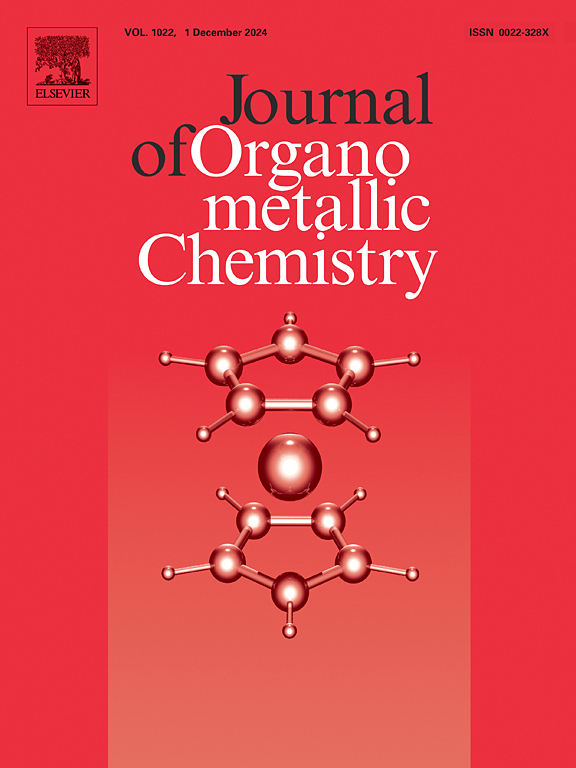Dehydration of fructose To 5-hydroxymethylfurfural biofuel using an ionic liquid immobilized SBA-16 recyclable catalyst
IF 2.1
3区 化学
Q3 CHEMISTRY, INORGANIC & NUCLEAR
引用次数: 0
Abstract
5-Hydroxymethylfurfural (5-HMF) is a highly valuable platform chemical that has garnered significant attention due to its potential in producing biofuels, bioplastics, and other renewable chemicals. As an intermediate, 5-HMF offers a sustainable pathway to replace petroleum-based products and is considered an ideal candidate for the bio-based chemical industry. Its importance lies not only in its wide range of applications in chemical synthesis but also in its potential to contribute to developing sustainable energy solutions. The conversion of biomass-derived sugars into 5-HMF represents a crucial step in advancing renewable energy technologies and reducing dependency on fossil fuels. In this study, sulfonic melamine-based ionic liquids (MILs) were successfully immobilized onto SBA-16 modified with (3-chloropropyl) trimethoxysilane, resulting in the synthesis of a highly efficient solid acid catalyst. This approach ensures high catalyst stability and activity in the dehydration of fructose to 5-HMF. Characterization methods showed that the mesostructure of SBA-16 remained intact following the immobilization of the IL. The catalyst was evaluated for its catalytic efficiency in producing 5-HMF, with various reaction parameters optimized to achieve a maximum yield. Under optimal conditions, a 98 % yield of 5-HMF was achieved after 30 min at 100 °C in DMSO with a catalyst loading of 15 mg. Moreover, the catalyst exhibited excellent recyclability, maintaining high catalytic activity across seven consecutive cycles.

用离子液体固定化SBA-16可回收催化剂脱水果糖制5-羟甲基糠醛生物燃料
5-羟甲基糠醛(5-HMF)是一种非常有价值的平台化学品,由于其在生产生物燃料、生物塑料和其他可再生化学品方面的潜力而引起了极大的关注。作为中间体,5-羟甲基糠醛提供了替代石油基产品的可持续途径,被认为是生物基化学工业的理想候选者。它的重要性不仅在于它在化学合成中的广泛应用,还在于它有助于开发可持续能源解决方案的潜力。将生物质衍生的糖转化为5-羟甲基糠醛是推进可再生能源技术和减少对化石燃料依赖的关键一步。本研究成功地将三聚氰胺磺酸基离子液体(mil)固定在(3-氯丙基)三甲氧基硅烷修饰的SBA-16上,合成了一种高效的固体酸催化剂。这种方法在果糖脱水成5-羟甲基糠醛过程中保证了高的催化剂稳定性和活性。表征方法表明,固定化IL后SBA-16的介观结构保持完整。对该催化剂制备5-HMF的催化效率进行了评价,并优化了各种反应参数以达到最大产率。在最佳条件下,5-羟甲基糠醛在DMSO中负载15 mg,在100°C条件下反应30 min,收率达到98%。此外,该催化剂表现出优异的可回收性,在连续七个循环中保持较高的催化活性。
本文章由计算机程序翻译,如有差异,请以英文原文为准。
求助全文
约1分钟内获得全文
求助全文
来源期刊

Journal of Organometallic Chemistry
化学-无机化学与核化学
CiteScore
4.40
自引率
8.70%
发文量
221
审稿时长
36 days
期刊介绍:
The Journal of Organometallic Chemistry targets original papers dealing with theoretical aspects, structural chemistry, synthesis, physical and chemical properties (including reaction mechanisms), and practical applications of organometallic compounds.
Organometallic compounds are defined as compounds that contain metal - carbon bonds. The term metal includes all alkali and alkaline earth metals, all transition metals and the lanthanides and actinides in the Periodic Table. Metalloids including the elements in Group 13 and the heavier members of the Groups 14 - 16 are also included. The term chemistry includes syntheses, characterizations and reaction chemistry of all such compounds. Research reports based on use of organometallic complexes in bioorganometallic chemistry, medicine, material sciences, homogeneous catalysis and energy conversion are also welcome.
The scope of the journal has been enlarged to encompass important research on organometallic complexes in bioorganometallic chemistry and material sciences, and of heavier main group elements in organometallic chemistry. The journal also publishes review articles, short communications and notes.
 求助内容:
求助内容: 应助结果提醒方式:
应助结果提醒方式:


